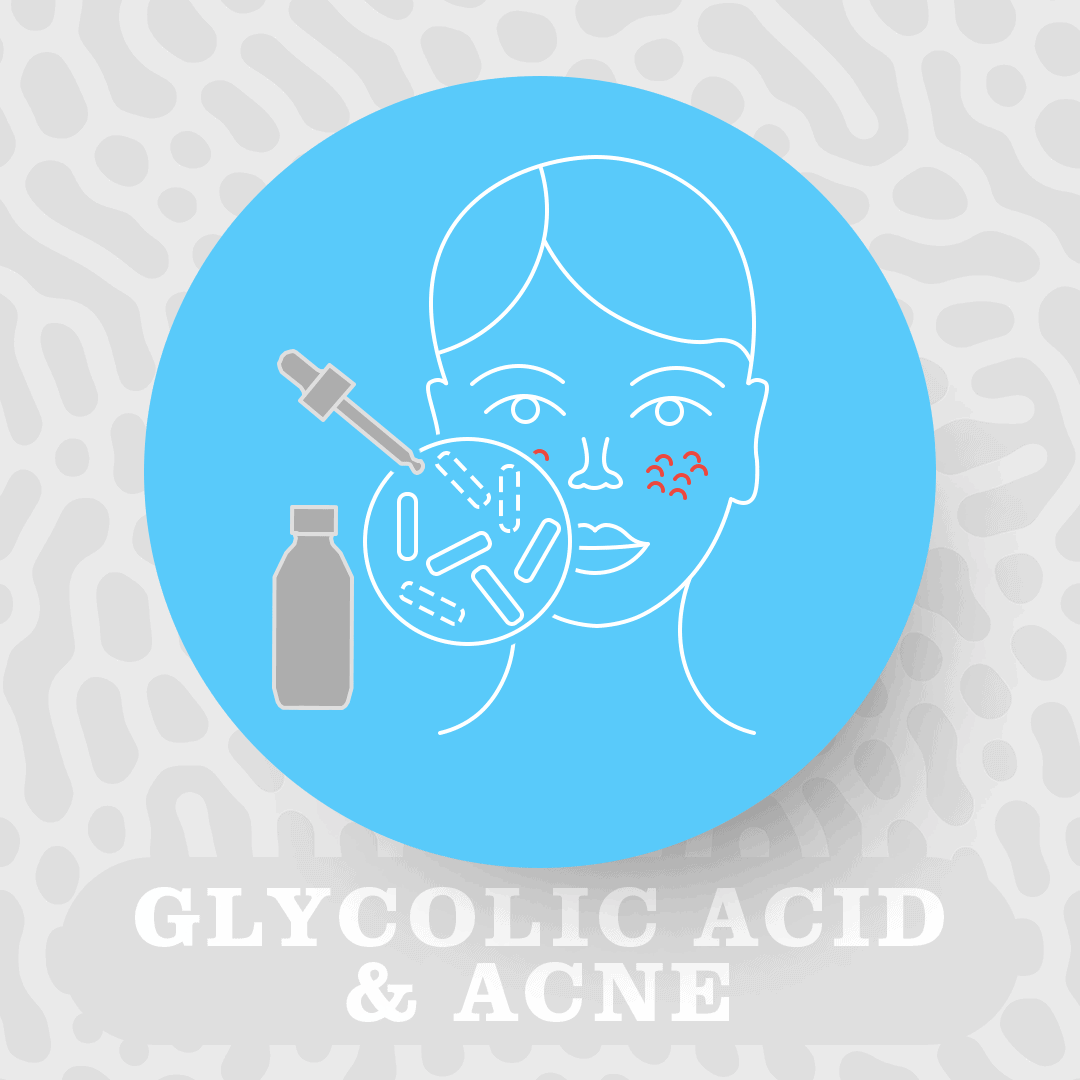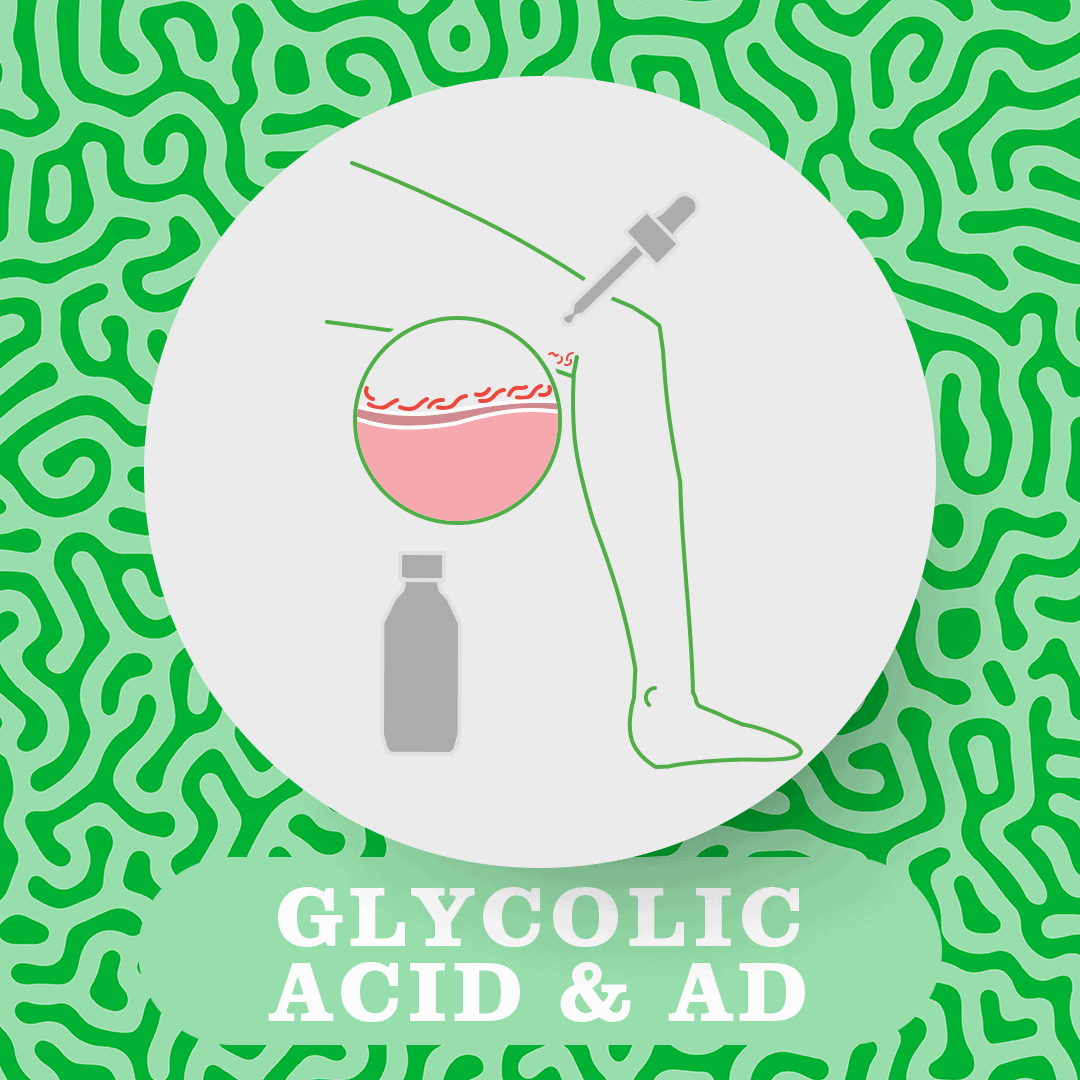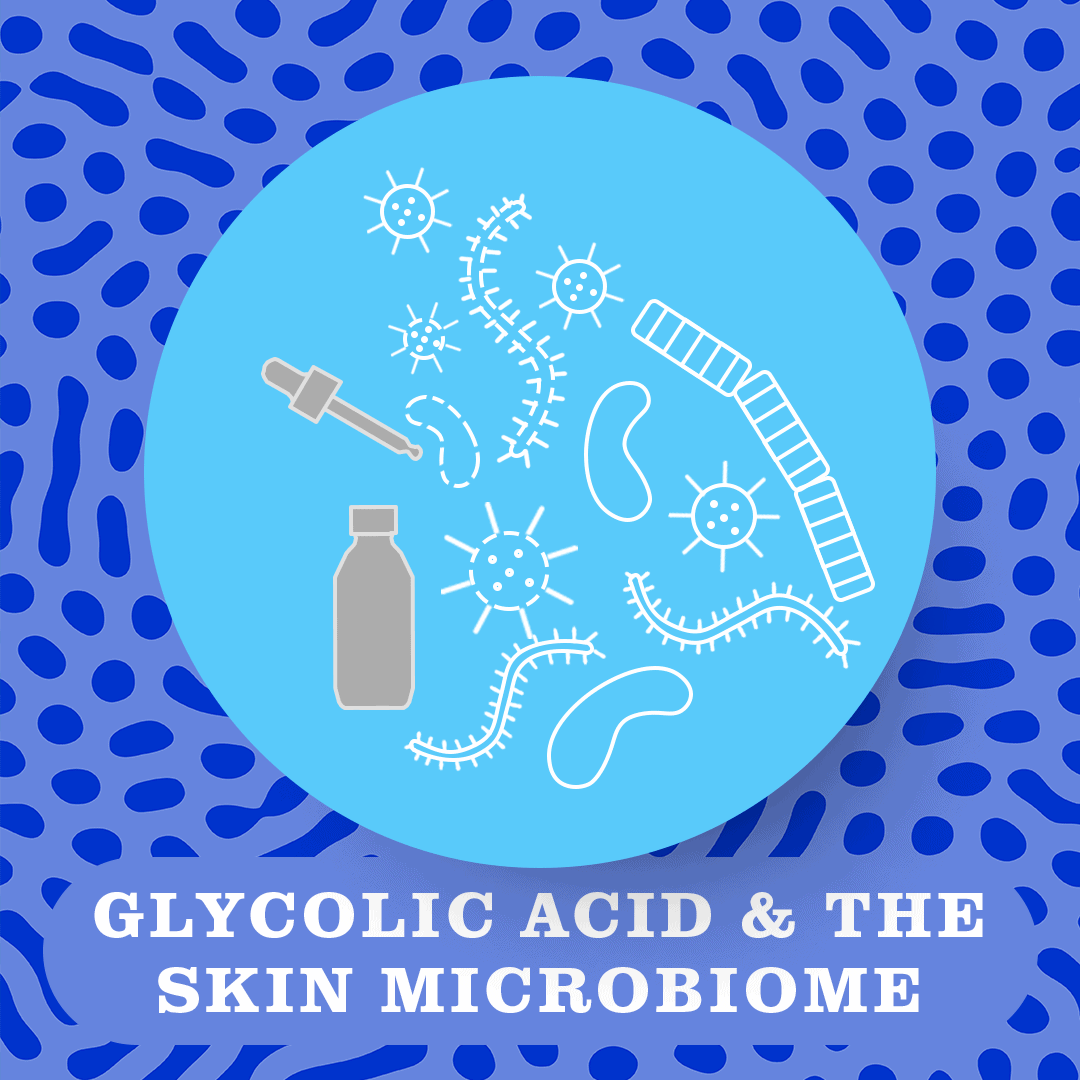Glycolic acid has recently experienced a huge boom in the skincare industry. It is the smallest alpha hydroxy acid (AHA) and one of the most common chemical peelings. It is extracted from fruits and sugarcane. The main niche of glycolic acid is in anti-aging by reducing lines and wrinkles, favoring cell renewal and enhancing the production of hyaluronic acid and collagen, essential compounds for moisturization and elasticity.
Acne
 For several years, glycolic acid has been incorporated as an adjuvant treatment for acne vulgaris, commonly known as acne.
For several years, glycolic acid has been incorporated as an adjuvant treatment for acne vulgaris, commonly known as acne.
It helps to diminish skin marks, unclog pores and prevent pore occlusion.
However, a recent investigation conducted by our group demonstrated that glycolic acid has the capacity not only to improve the side effects but to kill the bacteria associated with triggering the skin disease (Cutibacterium acnes).1
The potency of glycolic acid is determined by its pH; the highest antibacterial activity is reached at a pH of 3, and it loses its effectiveness as it becomes less acidic above 4.5. Additionally, we discovered that its mechanism of action is by disrupting the bacterial cell membrane. This mechanism has proven to be a larger hurdle for the development of bacterial resistance, a highly undesirable consequence of antibiotic overuse. As verified by our team, a concentration as low as 0.2 vol% of glycolic acid at a pH of 3.5 can inhibit C. acnes bacteria.
Of note, these results were obtained in laboratory conditions using agar plates, meaning that the concentration of the AHA was several times lower and a higher concentration must be used to penetrate the skin barrier.
An older investigation highlighted that a lotion with 30-35 vol% of glycolic acid at a pH of 1.2 drastically improved the condition of acne patients.2
Despite these good results, the concentration is extremely high and the pH too acidic to be suitable for use at home or sell over-the-counter. Only certified practitioners should apply these type of therapies.
Atopic Dermatitis (AD)

Regarding atopic dermatitis (AD), known also as eczema, glycolic acid has demonstrated its ability to reduce inflammation and repair the skin barrier, leading to fewer outbreaks. The sloughing-off damaged skin cells is critical for the healing process, and the gentle exfoliation that can be reached with lower concentration of glycolic acid is quite favorable.
The second benefit gained with glycolic acid exfoliation treatment is the move up of new cells to the surface. New cells are capable of retaining suitable levels of moisture, which prevents dryness and skin barrier breakage.
A third benefit gained from the use of hydroxy acids in general, is the decrease in pH. AD skin tends to have a more alkaline pH, between 0.1 and 0.9 units higher than the average healthy skin of 4.7.3,4 The mere reduction and maintenance of the skin pH can prevent the development of atopic dermatitis.5,6
Overall, most relevant scientific literature points out that glycolic acid in lower concentrations substantially improves AD. Nonetheless, some cases describe the aggravation of the conditions after using glycolic acid. To date, the mechanism of action is not fully understood and more information is required to give a final verdict.
The skin microbiome
At this point the arising question is: how does glycolic acid affect the skin microbiome?

Most products used to ameliorate skin conditions focus on reducing the number of bacteria causing the disease. As described above, glycolic acid efficaciously improves acne-prone skin by following this principle. Unfortunately, due to its non-specific nature, it can also wipe out other bacteria – both mutualistic or commensal (beneficial bacteria already thriving on skin) and pathogenic (bacteria strains triggering a disease). Just like antibiotics, glycolic acid does not target any specific genera of bacteria, meaning it does not make distinctions and can kill them all (beneficial and pathogenic).
As a concomitant (naturally accompanying) effect, glycolic acid also lowers skin pH creating a more acidic environment which inhibits bacterial growth. This does not mean that glycolic acid should be avoided, but it should be carefully used. The key is moderation!
High concentrations of glycolic acid and the continuous administration may provoke sensitivity, photodamage and thinning of skin, which might even affect the production of collagen.
The key point to remember is that glycolic acid can highly benefit your skin when used at an adequate concentration with moderation. Remember to be always gentle with your skin bacteria!
Currently there is no available information of the long-term effects of glycolic acid on the skin microbiome. However, sensitive skin and desquamation are clear indicators of skin dysbiosis. It is important to highlight that, when glycolic acid is used as part of a well-tailored skin care routine, it can remarkably improve the complexion. Think of glycolic acid as a rev-up treatment, which helps to boost cell renewal, maintain the natural acidic pH and – most importantly– decrease the amount of pathogenic bacteria. What comes next is vital. The application and consumption of products with pre-, pro- and post-biotics will allow the recolonization of the skin with mutualistic/commensal bacteria to return the balance.7-9
Hear from more microbiome experts in the Views from section of the Content Hub and don’t forget to follow us on Instagram for even more!
References:
1. Valle-González, E. R., Jackman, J. A., Yoon, B. K., Mokrzecka, N. & Cho, N.-J. pH-Dependent Antibacterial Activity of Glycolic Acid: Implications for Anti-Acne Formulations. Scientific Reports 10, 7491, doi:10.1038/s41598-020-64545-9 (2020).
2. Takenaka, Y., Hayashi, N., Takeda, M., Ashikaga, S. & Kawashima, M. Glycolic acid chemical peeling improves inflammatory acne eruptions through its inhibitory and bactericidal effects on Propionibacterium acnes. The Journal of dermatology 39, 350-354 (2012).
3. Danby, S. G. & Cork, M. J. in pH of the Skin: Issues and Challenges Vol. 54 95-107 (Karger Publishers, 2018).
4. Lambers, H., Piessens, S., Bloem, A., Pronk, H. & Finkel, P. Natural skin surface pH is on average below 5, which is beneficial for its resident flora. International journal of cosmetic science 28, 359-370 (2006).
5. Hachem, J.-P. et al. Acute acidification of stratum corneum membrane domains using polyhydroxyl acids improves lipid processing and inhibits degradation of corneodesmosomes. Journal of investigative dermatology 130, 500-510 (2010).
6. Man, M.-Q. et al. Characterization of a hapten-induced, murine model with multiple features of atopic dermatitis: structural, immunologic, and biochemical changes following single versus multiple oxazolone challenges. Journal of Investigative Dermatology 128, 79-86 (2008).
7. Moroi, M. et al. Beneficial effect of a diet containing heat‐killed Lactobacillus paracasei K71 on adult type atopic dermatitis. The Journal of dermatology 38, 131-139 (2011).
8. Patra, V., Gallais Sérézal, I. & Wolf, P. Potential of Skin Microbiome, Pro-and/or Pre-Biotics to Affect Local Cutaneous Responses to UV Exposure. Nutrients 12, 1795 (2020).
9. Hong, K.-B., Hong, Y. H., Jung, E. Y., Jo, K. & Suh, H. J. Changes in the Diversity of Human Skin Microbiota to Cosmetic Serum Containing Prebiotics: Results from a Randomized Controlled Trial. Journal of Personalized Medicine 10, 91 (2020).
